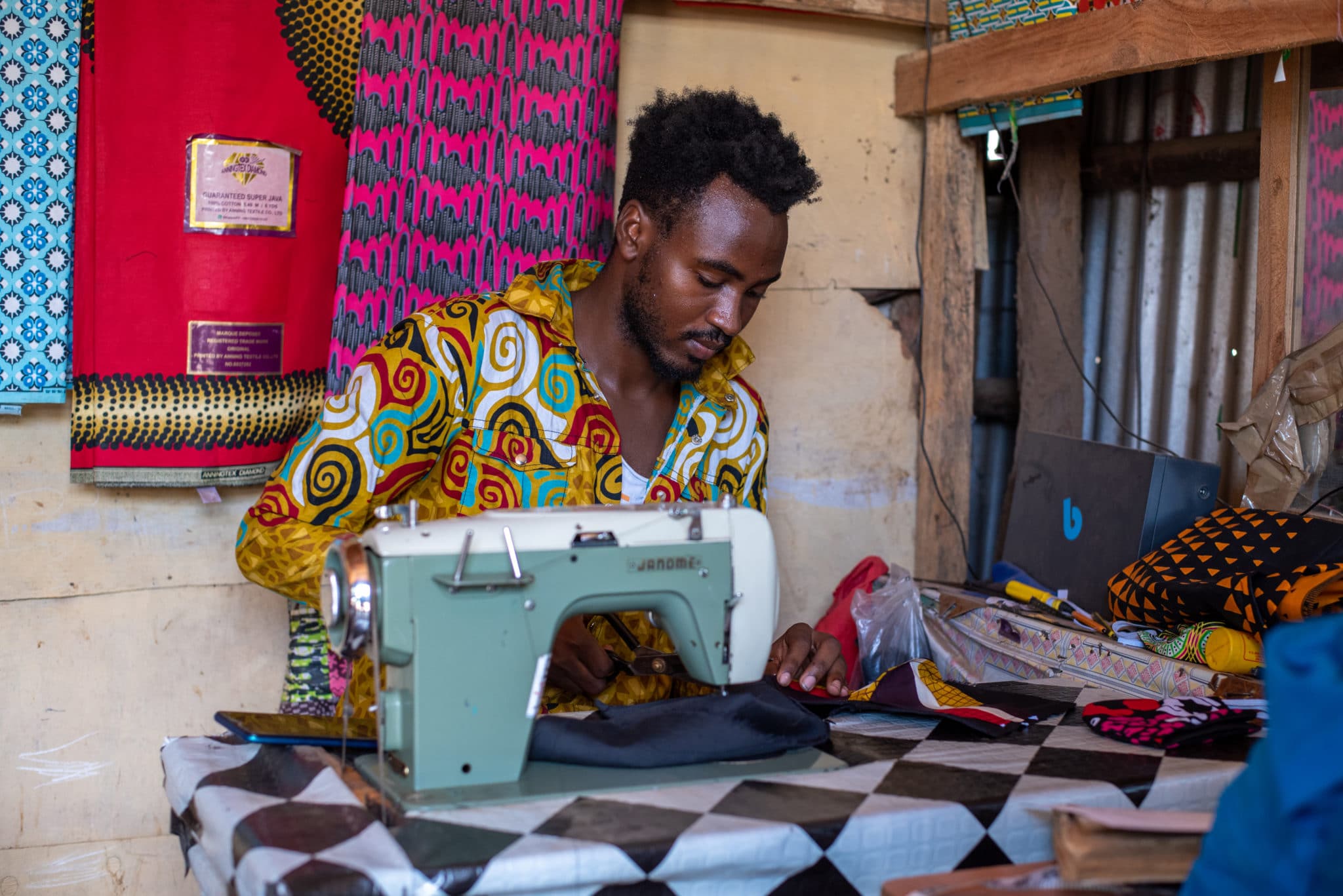Coronavirus and Refugees
COVID-19 has devastated the lives of refugees and internally displaced people.
The coronavirus disease, known as COVID-19, knows no borders, no language barriers. When it comes to COVID-19, no one is safe until everyone is safe.
Photo: @UNHCR/Eugene Sibomana
Please help refugees and internally displaced people throughout the world protect their families.

Clean Water
Face Masks

Cash Assistance
How has the pandemic impacted refugees and displaced populations?
For the 80 million people forcibly displaced at the start of 2020, COVID-19 only worsened an already tumultuous situation. The pandemic exacerbated existing poverty and inequity levels for refugees and internally displaced people, creating unprecedented humanitarian needs. A COVID-19 induced recession is expected to push between 88 million and 115 million people into extreme poverty.
A loss of income coupled with limited access to social protection increases the risk of being unable to meet basic needs. Oftentimes, families are forced to make choices that negatively affect them, such as cutting spending on food or buying poorer quality products, taking out loans, moving to poorer quality housing and discontinuing education. Even before the pandemic, nearly half of the 7.4 million school-age refugee children were out of school.
The economic downturn means many people of concern, particularly urban populations, have lost or seen a major reduction in their income and are struggling to meet their basic needs. UNHCR monitoring indicates that 74% of refugees can only meet half or less of their basic needs.
There has also been a global spike in gender-based violence among people of concern with increased levels of intimate partner incidents, a heightened risk of violence for women engaging in the sale and exchange of sex, and a higher risk of child marriage and teenage pregnancy. Gender inequalities are deepening: many women and girls are seeing their access to assistance and services limited even further and their unpaid care responsibilities increasing.
Despite an estimated 1.44 million refugees in urgent need of resettlement globally, less than 23,000 were resettled through UNHCR last year. This has meant a huge impact of the pandemic on refugees. These are the lowest refugee resettlement numbers UNHCR has witnessed in almost two decades. The drop stems from low quotas put forward by countries and the impact of COVID-19, which delayed departures and programs.
What kind of relief is the UNHCR providing?
Since the start of the COVID-19 pandemic, UNHCR has scaled up our work to keep refugees and internally displaced people safe across the globe. Throughout this crisis, UNHCR continues to prepare, prevent and respond to possible outbreaks among displaced populations, along with reducing the financial and socioeconomic impacts on affected communities.
UNHCR has helped refugees and internally displaced people with:
- Cash assistance to pay for basics like food and shelter
- Communicating protection measures with affected communities
- Face masks to reduce viral spread
- Protecting women and girls from violence
- Clean water, sanitation and hygiene supplies to facilitate and promote handwashing
- Supporting government health systems
What is happening with the COVID-19 vaccine?
Healthcare is a human right: health equity and vaccine equity is important to UNHCR. We have been advocating for equity of vaccine access for refugees, internally displaced and stateless populations, specifically in regards to the national vaccination plans through the COVAX Facility. The COVAX Facility is a global health initiative that brings together governments and manufacturers to ensure the equitable distribution of COVID-19 vaccines, including those in low income countries and those at risk of being left behind, such as refugees, asylum seekers and stateless. Since the vast majority of the world’s refugees are hosted in low and middle income countries, support of host country governments is crucial to ensure that refugees are also included in the roll-out of the vaccine.
Jordan has become one of the world’s first countries to start COVID-19 vaccinations for refugee.
Where can I access the latest data and reports?
COVID-19 Situation Portal—for latest updates, including UNHCR situation reports, funding requirements and UNHCR’s support across regions.
Key Areas of Focus in 2021
Clean water and sanitation are not only essential for maintaining human health, but are also imperative in protecting people from COVID-19. UNHCR plans to maintain its efforts to support and improve these services throughout the year, as well as to communicate about hygiene best practices to the community.
Cash Assistance helps refugees in the safest, most cost-effective and flexible way. Contactless payments, including mobile banking, alongside physical distancing measures.
The COVID-19 crisis has deteriorated women’s safety, resulting in a marked increase in gender-based violence, in particular intimate partner violence, due to tensions over lockdowns, movement restrictions and financial difficulties. The ongoing crisis has also increased the risk of sexual violence and exploitation. Assistance is needed to expand prevention activities, develop partnerships with women-led groups, enhance risk mitigation and provide counselling.
Did you know that in 2020 UNHCR was able to assist 1.2 million people with livelihood support, including business loans and training?
Refugee tailors supply face masks in fight against COVID-19
Maombi Samil, a 24-year-old refugee from the Democratic Republic of the Congo, realized that his skills could be put to a new use and began making facemasks at his small business, Samir’s Design Shop_One in Kenya’s Kakuma camp.
“There was a shortage of masks and I had seen samples of facemasks on the internet,” said Samil, who is professionally known as Designer Samir. “I wanted to use my talent and locally available fabric to show that we [refugees] can also contribute to the response to the pandemic and not just rely on assistance.”
Using readily available wax-printed cotton known as Ankara fabric, Samir and his staff of three set to work with their sewing machines. Within a week, he had delivered 300 facemasks to the office of UNHCR in Kakuma to be distributed to staff working there. He also gave away masks to refugees and local people who could not afford to buy them from his shop.
Around the world, displaced artisans began supplying face masks and protective equipment in desperately short supply.
© UNHCR/Samuel Otieno

Refugee tailors supply face masks in fight against COVID-19
Maombi Samil, a 24-year-old refugee from the Democratic Republic of the Congo, realized that his skills could be put to a new use and began making facemasks at his small business, Samir’s Design Shop_One in Kenya’s Kakuma camp.
“There was a shortage of masks and I had seen samples of facemasks on the internet,” said Samil, who is professionally known as Designer Samir. “I wanted to use my talent and locally available fabric to show that we [refugees] can also contribute to the response to the pandemic and not just rely on assistance.”
Using readily available wax-printed cotton known as Ankara fabric, Samir and his staff of three set to work with their sewing machines. Within a week, he had delivered 300 facemasks to the office of UNHCR in Kakuma to be distributed to staff working there. He also gave away masks to refugees and local people who could not afford to buy them from his shop.
Around the world, displaced artisans began supplying face masks and protective equipment in desperately short supply.
© UNHCR/Samuel Otieno
Please help support refugee families make it through COVID-19.


